What is protein?
Protein is an essential component of the human body. It’s one of the three macronutrients. Along with fats and carbohydrates, they are used as a source of energy.
Proteins build and repair muscle mass and tissues like bones and tendons. They are essential to sustain several vital functions, such as:
- Hormone system: Most hormones are proteins. Insulin and Glucagon hormones are an example of protein hormones that regulate glycemic blood levels. They are involved in diabetes.
- Transport system: Transport proteins carry nutrients through the blood system. Specific proteins transport nutrients like iron, cholesterol and glucose. Some proteins can store nutrients as Ferritin does with iron.
- Immune system: Antibodies are proteins of the immune system that protect the body against harmful external attacks. Inflammation is also another defence mechanism that relies on proteins. Cytokines proteins control the inflammation balance by stimulating or inhibiting the response.
Where do we find proteins?
Proteins come from diverse dietary sources. They are found in various amounts in animal products, legumes, grains, nuts and seeds.
Animal source
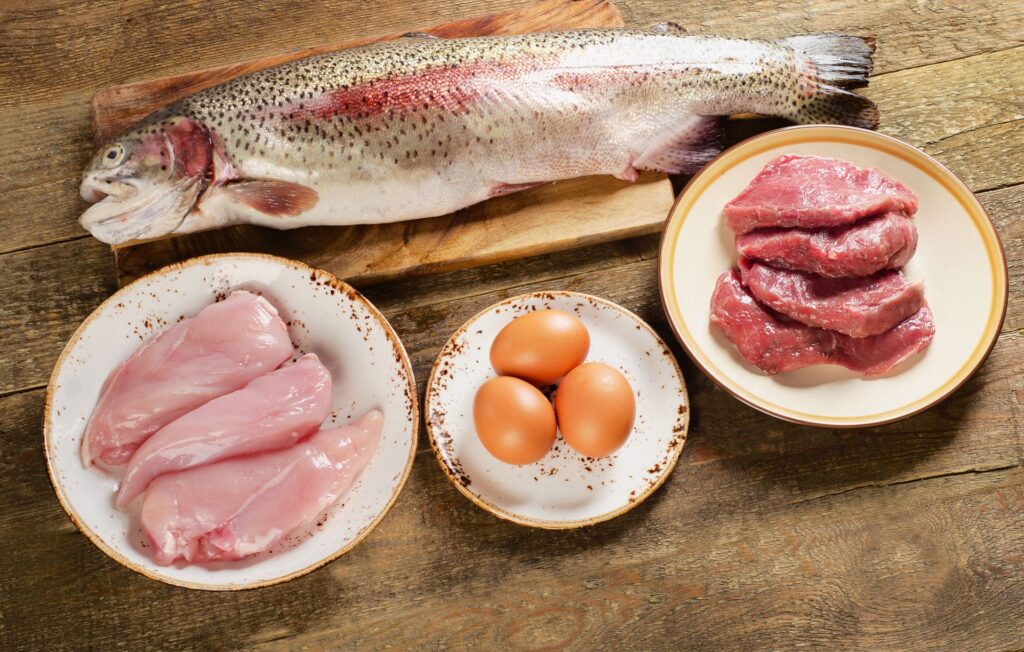
Animal sources of proteins include meat, poultry, fish, eggs and dairy products.
Animal foods are considered rich in protein. When consuming animal proteins, choose lean meat and low-fat products. Proteins from animal sources like red meat are generally associated with high saturated fats. Saturated fats have been associated with increased levels of cholesterol and cardiovascular diseases. Animal source proteins tend to be poor in fiber, which can disturb digestive system balance.
Avoid ultra-processed meats like bacon, cold cuts and chicken nuggets as they can negatively affect your health.
Plant-based source
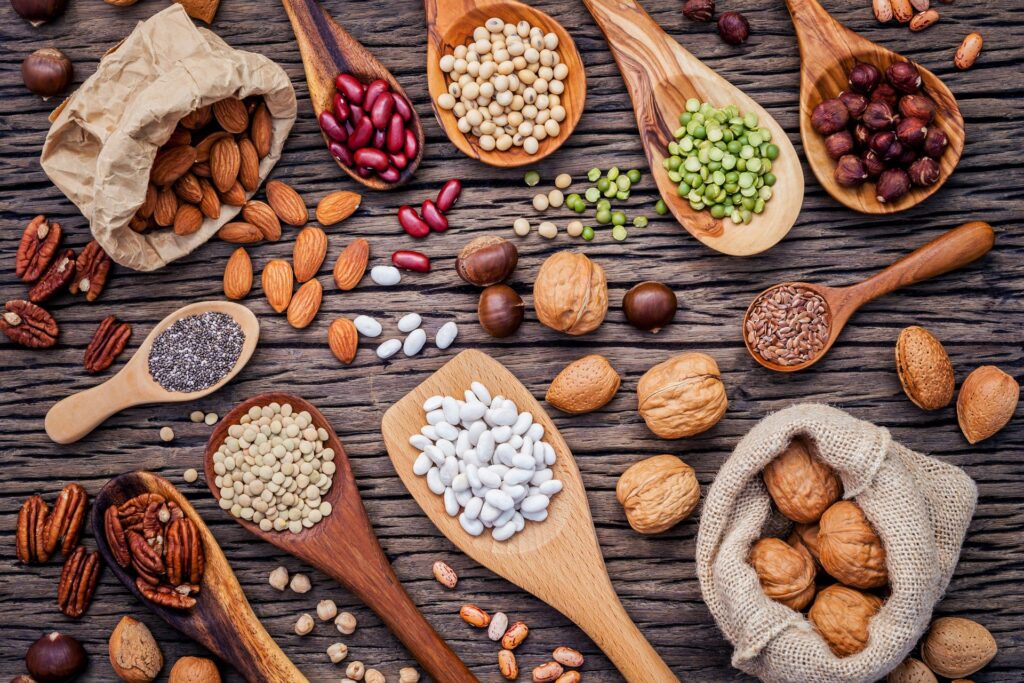
Plant-based sources of proteins include legumes like beans, lentils, peas, soybeans, nuts and seeds like cashews, almonds, sesame seeds, and chia seeds. Whole grains like quinoa, rice, millet and oats contain proteins but in smaller amounts.
Proteins from plant-based sources are associated with higher fiber and lower saturated fats. Fiber slows the breakdown of food and prevents blood glucose spikes, which protect against type 2 diabetes. Low saturated fats decrease bad cholesterol levels and reduce the risk of cardiovascular diseases.
Are proteins all equal?
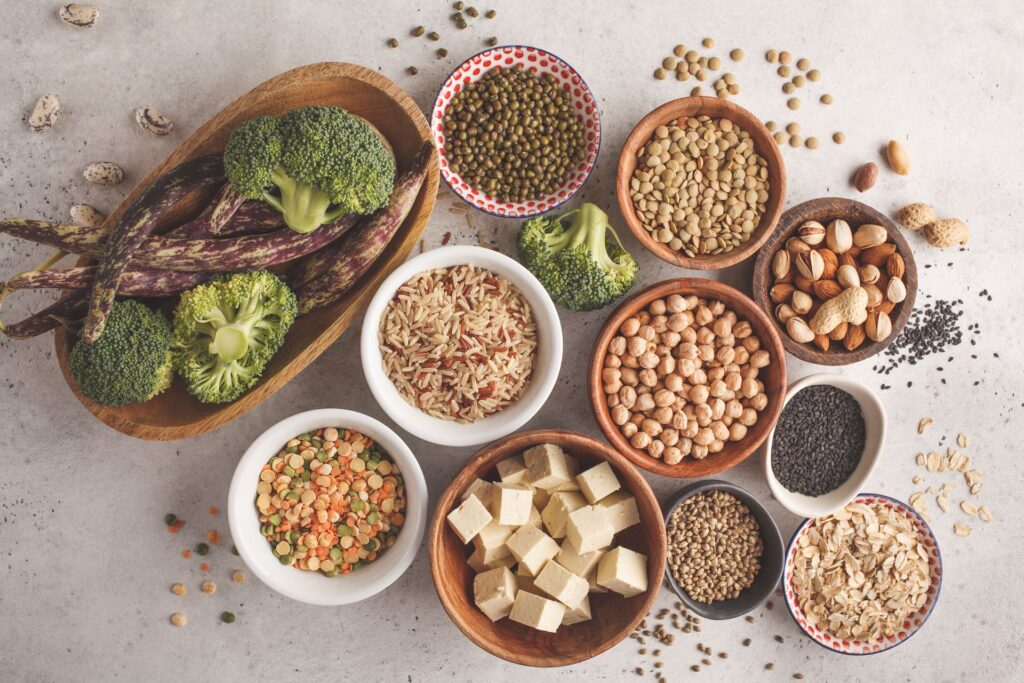
Proteins are made of long chains of molecules called Amino Acids. Twenty amino acids join in various orders and combinations to form different proteins.
The human body can synthesise all amino acids except 9 of them. These are called essential amino acids that we need to get from our nutrition. Foods that contain all the essential amino acids are considered complete.
Based on amino acid combinations, proteins are divided into complete and incomplete:
Complete proteins:
They contain the nine essential amino acids. These include animal protein sources, soy products and quinoa.
Incomplete proteins:
They don’t contain all the nine essential amino acids. Most plant-based proteins are incomplete (except soy products and quinoa).
If your proteins come mainly from plant-based sources, you can still have all essential amino acids by combining incomplete protein foods.
How to get complete proteins from a plant-based diet?
Using the plate method helps provide all essential amino acids by associating plant-based proteins with whole grains. It’s unnecessary to have all the essential amino acids during the same meal. Make sure to have a varied diet throughout the day.
Some examples of combined foods:
– Hummus and pita bread: Hummus is made of chickpeas and sesame paste, and pita bread is made of wheat flour.
– Koshary: a dish composed of lentils, rice and macaroni.
– Whole wheat bread and peanut butter.
How much protein do we need?

Protein needs will vary depending on sex, age, physical activity and health status. For an average adult with a light level of physical activity, the recommended daily intake is 0.8 grams per kilogram of body weight (0.36 grams per pound). For someone who weighs 70 kg (154 pounds), 0.8 x 70 = 56 grams would cover proteins daily needs.
An athlete needs a higher amount of proteins, between 1.2 to 2.0 grams per kilogram of body weight.
Proteins deficiency
Protein deficiency is rare in most countries. It is a severe health issue that could concern people with eating disorders, medical conditions or people following a very strict diet. If you have any concerns about your protein consumption, you should consult a health professional.
Proteins excess
Proteins increase the feeling of fullness and decrease hunger, which can help in weight loss. High-protein diets advocate for a high amount of protein and cutting carbs. They generally are not recommended for the long term and should be adopted on the advice of a health professional.
People with medical conditions should consult their physician before starting a high-protein diet. Consuming high proteins may alter kidney function for patients with an existing kidney condition.
Proteins in the Plate Method
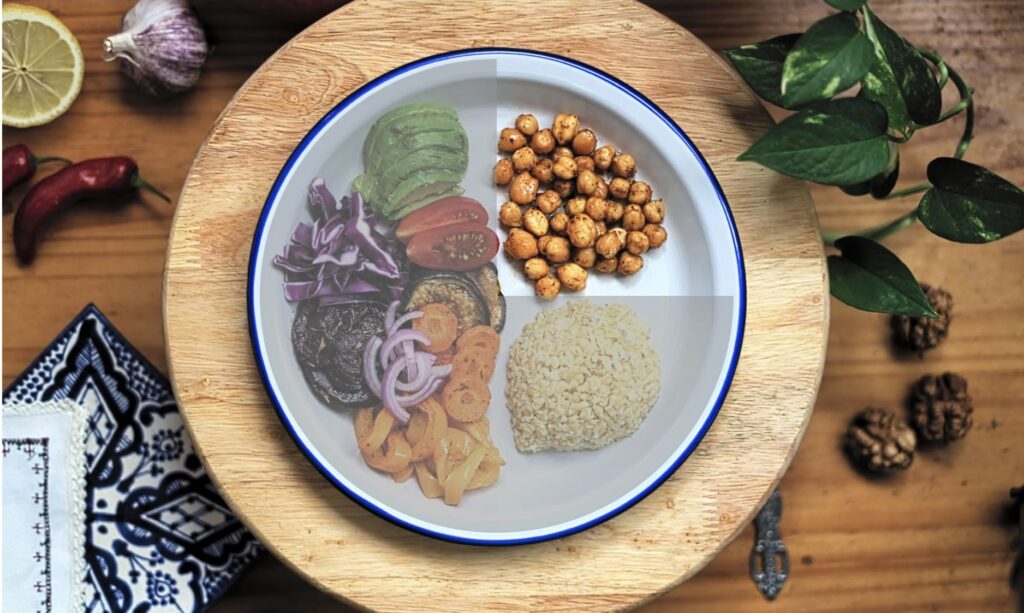
The plate method is a visual dietary guideline for a balanced diet. The plate is composed of proteins, whole grains, vegetables, and fruits. The protein part represents 1/4 of the plate. Recommended proteins in the plate method include:
Animal source
– Eggs
– Lean meat and poultry
– Fish and shellfish
– Low-fat diary products
Plant-based source
– Lentils, peas and dried beans: such as red lentils, brown lentils, chickpeas, split peas, kidney beans, and mung beans.
– Nuts and seeds: such as cashews, peanuts, almonds, sunflower seeds, and chia seeds.
– Soy products: such as soybeans, tofu, and tempeh.
Using the plate method throughout the day helps compose a balanced diet with sufficient protein intake from animal sources as well as plant-based sources.
JustaPlate is a meal tracker app based on the plate method. It available for both iOS and android.
If you are seeking to improve your eating habits, download JustaPlate today. Start your meal tracking journey toward a healthier lifestyle.
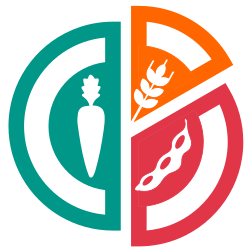
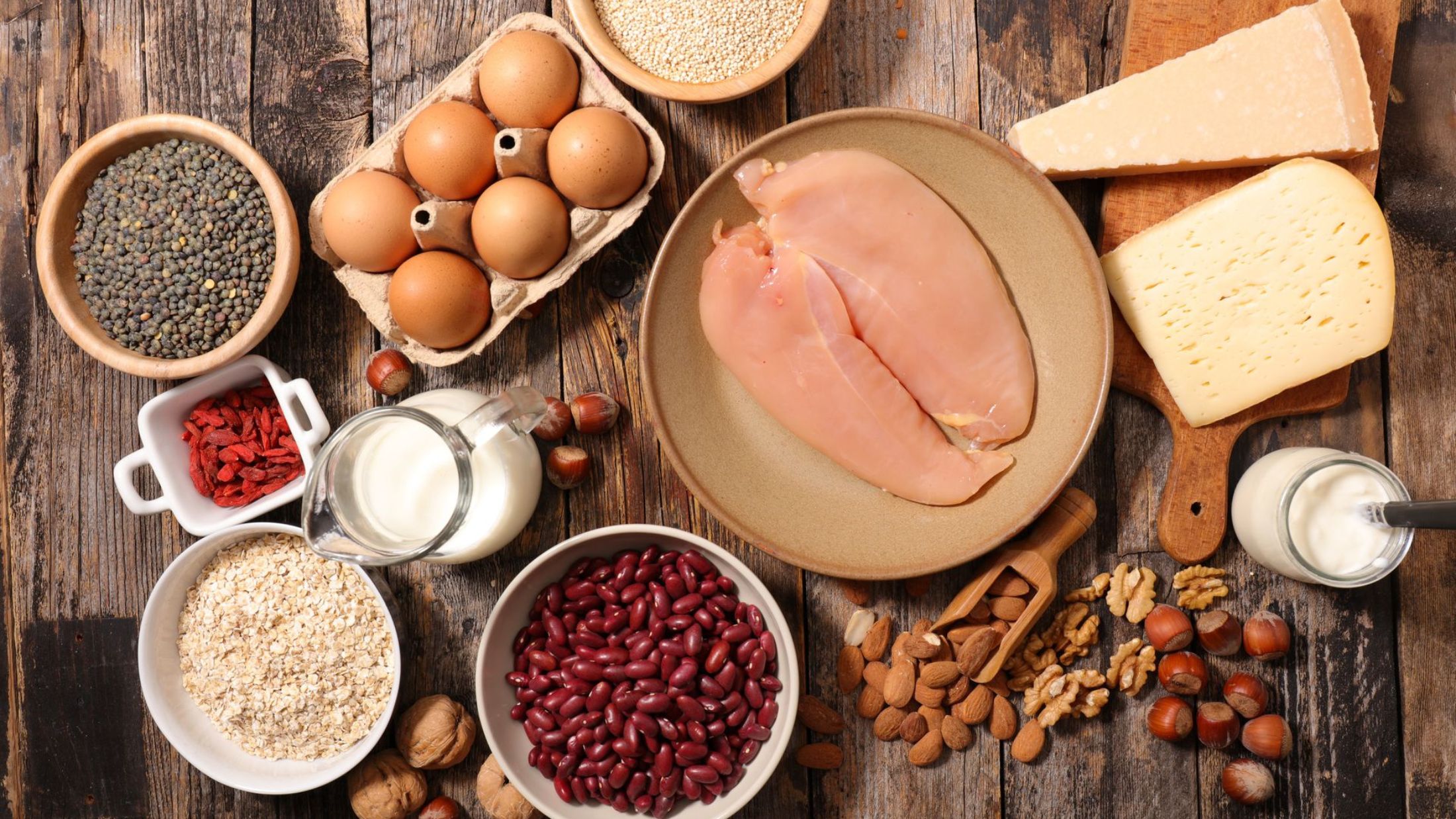


Leave a Reply